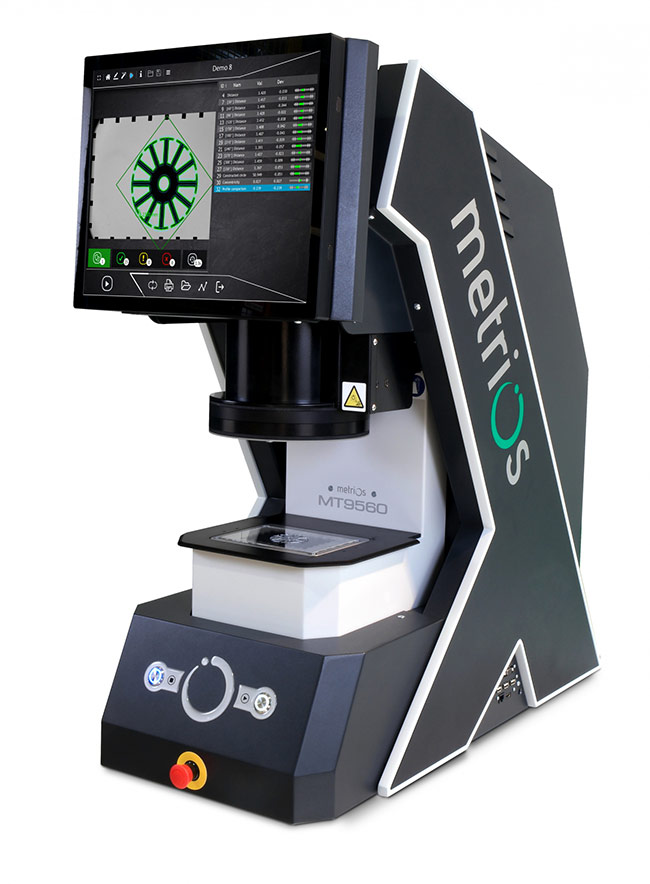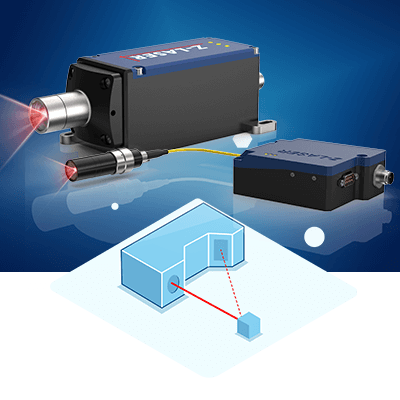How optical measurement systems minimize waste and rework in lean manufacturing
How optical measurement systems minimize waste and rework in lean manufacturing
Blog Article
The Role of Optical Dimension Solutions in Progressing Metrology Techniques
Optical measurement systems have actually changed width, bringing a level of accuracy that was as soon as unimaginable. As you check out further, you'll uncover just how these systems are shaping the future of measurement and top quality control.
The Advancement of Assessment: A Historical Perspective
As you explore the history of metrology, you'll discover that its advancement reflects humanity's mission for precision and standardization. From ancient civilizations utilizing body components as systems of measurement to the advancement of standard weights and procedures, each action shows our wish for precision. The Egyptians built the pyramids making use of accurate measurements, while the Romans progressed engineering with their sophisticated measuring devices.
During the Renaissance, clinical advancements moved the emphasis toward extra empirical methods, paving the method for contemporary width. The introduction of the statistics system in the late 18th century noted a significant turning point, establishing global requirements. Throughout the 20th century, technical developments additionally transformed assessment, enabling very exact dimensions in numerous fields.
Today, metrology proceeds to progress, incorporating electronic innovation and automation. This history highlights not just the relevance of measurement but also our relentless pursuit of boosting accuracy and consistency in our progressively intricate globe.
Principles of Optical Dimension Equipments
Recognizing the concepts behind optical measurement systems is essential for exact cause width. You'll wish to take into account fundamental optical principles, dimension precision variables, and reliable system calibration methods. Each of these elements plays a vital duty in ensuring your dimensions are accurate and reputable.
Basic Optical Principles
While exploring optical dimension systems, you'll come across essential optical principles that form the foundation of accurate data procurement. Light acts in foreseeable means, and understanding these habits-- like diffraction, refraction, and representation-- is vital for reliable dimensions. By mastering these principles, you'll be outfitted to leverage optical technologies successfully, leading the means for advancements in width and guaranteeing your dimensions are both dependable and repeatable.
Dimension Accuracy Factors
To accomplish high measurement accuracy in optical systems, a number of aspects enter into play, affecting the integrity of your outcomes. Initially, the top quality of the optical parts matters substantially. Top quality lenses and detectors decrease aberrations and noise, ensuring your measurements are precise. Second, environmental conditions like temperature level and moisture can influence dimensions, so preserving a stable atmosphere is crucial. Third, the alignment of the optical system is crucial; even small imbalances can bring about considerable errors. The wavelength of light made use of impacts the resolution and precision of your dimensions. By dealing with these elements, you can enhance the total efficiency of your optical measurement systems, leading to even more precise and reliable results in your metrology applications.
System Calibration Techniques
Achieving high dimension precision is only part of the formula; proper system calibration strategies are just as important in optical dimension systems. To assure your system supplies trusted results, you must frequently adjust it making use of basic recommendation products. Beginning by adjusting the optical components, like lenses and mirrors, to lessen methodical mistakes. Next off, use known measurements to confirm the system's outcome and make needed improvements. It's also important to account for environmental elements-- temperature and humidity can impact dimensions. Carry out a regular calibration routine to preserve uniformity gradually. Record all calibration procedures and outcomes; this will certainly aid you track efficiency and attend to any type of drift in accuracy. With these techniques, you'll enhance the reliability of your optical dimension system.
Key Technologies Behind Optical Measurement
Optical measurement systems rely upon numerous crucial innovations that enhance precision and performance in assessment. One vital technology is interferometry, which makes use of the disturbance of light waves to gauge little displacements and surface area irregularities with extreme accuracy. You'll also locate laser scanning systems, which catch comprehensive 3D information of items quickly, making them invaluable for dimensional evaluation.
Additionally, CCD and CMOS sensing units play a considerable duty in converting light right into electrical signals, enabling high-resolution imaging and exact measurements. Advanced formulas for image processing further enhance dimension accuracy by assessing data in real time, removing sound and improving attributes.
Lastly, optical fiber offer adaptability and the ability to determine in difficult atmospheres while keeping signal integrity. By leveraging these innovations, you can achieve exceptional outcomes in your metrology tasks, making certain that your measurements are both precise and trusted.
Applications of Optical Measurement in Industry
As markets significantly demand accuracy and performance, the applications of optical dimension systems have become important throughout numerous sectors. In manufacturing, these systems aid you monitor dimensions and tolerances in real-time, making sure quality assurance without time-consuming manual checks. In the automobile market, optical dimensions aid in straightening parts with precision, enhancing safety and performance.
In electronics, you're utilizing optical techniques to check min functions on motherboard, detecting defects that could lead to failures. The aerospace sector benefits from non-destructive testing methods, enabling you to examine products and elements without jeopardizing their stability.
Optical measurement also optical measurement systems plays an essential role in fabrics, making sure material dimensions meet exact specifications. optical measurement systems. With their capacity to give high-resolution information swiftly, these systems equip you to make informed choices, simplify procedures, and eventually drive innovation throughout your sector
Enhancing Accuracy and Efficiency in Dimensions
When you consider enhancing precision in measurements, precision in your dimension methods is essential. By enhancing these processes, you can accomplish quicker outcomes without sacrificing quality. Allow's check out how taking on advanced optical dimension systems can raise both accuracy and performance in your work.
Accuracy in Measurement Techniques
Accuracy in measurement strategies is vital for achieving trusted lead to width, particularly since tiny discrepancies can bring about considerable mistakes. By utilizing innovative optical measurement systems, you can improve the precision of your measurements. These systems give high-resolution data that aid you spot also the slightest variations in dimensions. When you take on these innovations, you decrease unpredictabilities and boost repeatability in your processes. In enhancement, precise measurements enable you to keep quality control, making sure that items meet rigid requirements. This not only increases your credibility but likewise boosts consumer complete satisfaction. Buying accuracy dimension devices ultimately results in enhanced effectiveness, reduced waste, and maximized manufacturing cycles. Embracing these techniques will transform your technique to width, generating impressive outcomes.
Enhancing Measurement Processes
To enhance precision and effectiveness in measurements, improving your measurement procedures is necessary. Begin by adopting optical dimension systems that offer real-time data, reducing the moment invested in manual recording. These systems often incorporate effortlessly with existing software application, allowing you to automate information collection and analysis.
Following, systematize your measurement methods. By carrying out consistent treatments, you lessen variability and boost repeatability. Don't neglect to consistently calibrate your tools to ensure its precision.

The Effect of Optical Dimension on R & D
As researchers endeavor to push the limits of advancement, optical dimension systems have actually become essential tools in the advancement procedure. These systems give you with specific, real-time information that boosts your ability to assess intricate products and frameworks. In numerous areas, from biotechnology to aerospace, you rely upon optical dimensions to maximize layouts and boost item efficiency.

With high-resolution imaging and non-contact techniques, you can lessen example disturbance, enabling more accurate outcomes. This capacity to catch minute details accelerates your R&D cycle, letting you repeat layouts swiftly and effectively. Moreover, optical measurement cultivates partnership throughout techniques, as the data created is frequently easily interpretable and shareable.
Inevitably, incorporating optical measurement systems right into your study not just increases productivity yet likewise deepens your understanding of the sensations you research study. By leveraging these advanced strategies, you're much better equipped to introduce and stay in advance in a competitive landscape.
Future Trends in Optical Dimension Systems
With the quick improvement of technology, you're most likely to see significant changes in optical measurement systems that will certainly redefine their application across numerous industries. You'll observe an approach enhanced automation and assimilation of synthetic knowledge, allowing for real-time information analysis and improved precision. Miniaturization is one more fad; small tools will allow dimensions in tighter areas, making them excellent for fields like aerospace and biomedical applications.
Anticipate to see systems that can run in tough environments, offering trustworthy dimensions in severe problems. As these modern technologies converge, you'll find that optical measurement systems not only enhance precision but also improve process, eventually driving advancement and performance in your tasks.
Regularly Asked Inquiries
Just How Do Optical Measurement Systems Compare to Traditional Dimension Techniques?
Optical dimension systems use greater precision and faster results compared to traditional techniques. You'll find they record even more information points accurately, reducing human error and increasing integrity, making them a recommended option in different applications.
What Industries Benefit Most From Optical Dimension Equipments?
You'll discover markets like aerospace, auto, and electronic devices benefit most from optical measurement systems. These sectors rely on precise measurements to assure quality and performance, enhancing efficiency and lowering prices with advanced modern technology.

Are Optical Dimension Systems Expensive to Apply?
Optical dimension systems can be expensive to apply, but their accuracy and efficiency commonly justify the expense. Spending in such innovation can bring about significant lasting savings and enhancements in top quality across different applications.
What Abilities Are Required to Operate Optical Dimension Equipments?
To operate optical measurement systems, you'll require solid logical skills, interest to information, and effectiveness in software tools. Knowledge with optics and an understanding of dimension principles will likewise boost your effectiveness and effectiveness.
Exactly How Do Ecological Factors Affect Optical Measurements?
Environmental aspects like air, temperature, and humidity high quality can distort optical measurements. You'll discover variants in precision as a result of light disturbance or refraction. optical measurement systems. Maintaining stable conditions is important for exact and dependable optical measurement results
Final thought
In summary, optical dimension systems are transforming metrology by giving unequaled precision and performance. As you explore future trends, you'll see just how the combination of AI and automation will proceed to elevate dimension methods, driving technology and enhancing quality control.
Attaining high measurement precision is just part of the formula; proper system calibration strategies are equally essential in optical measurement systems.When you assume about boosting accuracy in measurements, accuracy in your measurement strategies is important. By making use of advanced optical dimension systems, you can enhance the accuracy of your dimensions.To enhance accuracy and performance in measurements, enhancing your dimension processes is necessary. How Do Optical Measurement Equipments Contrast to Conventional Measurement Techniques?
Report this page